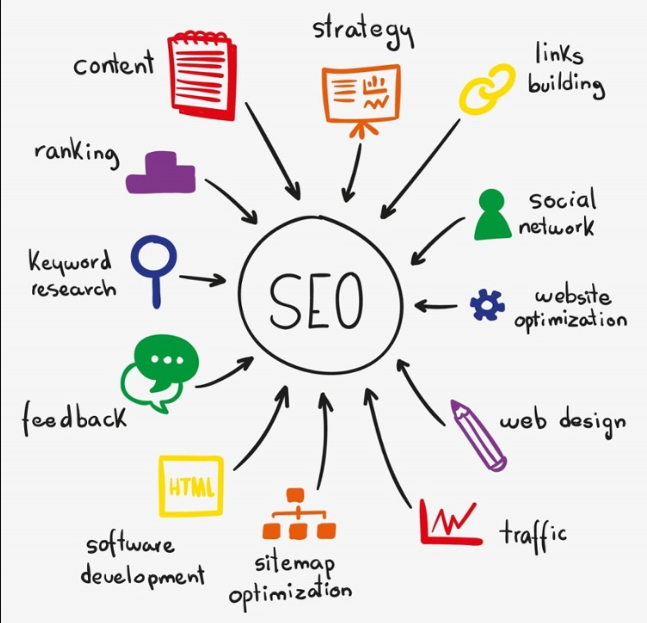Understanding the Duty of Individual Experience in Modern SEO Practices
In an era where digital visibility can make or damage an organization, understanding the junction between customer experience (UX) and modern Search engine optimization practices is a lot more vital than ever. As search engines evolve, they significantly prioritize internet sites that use seamless, engaging experiences to customers. Exactly how do these elements specifically affect search positions?
The Development of Search Engine Optimization
Throughout the years, the landscape of seo (SEARCH ENGINE OPTIMIZATION) has undergone substantial improvement, mirroring the dynamic nature of electronic modern technology and individual behavior. SEO was largely about keyword stuffing and link-building approaches, focusing heavily on controling search engine formulas to boost internet site rankings. Nevertheless, as online search engine became a lot more sophisticated, these techniques began to lose efficiency and significance.

In addition, mobile optimization and voice search have ended up being indispensable elements of search engine optimization approaches. With the proliferation of smart devices, making sure internet sites are mobile-friendly has actually come to be a necessity. Voice search, driven by virtual aides like Siri and Alexa, has actually further moved search engine optimization techniques in the direction of all-natural language handling and conversational content.
In essence, the evolution of SEO mirrors a more comprehensive pattern in the direction of boosting customer fulfillment by straightening digital web content with the nuanced expectations of contemporary customers.
Key UX Components in SEO
In the world of search engine optimization, essential individual experience (UX) components are critical for improving both user complete satisfaction and search engine rankings. Internet sites enhanced for mobile usage not just foster a smooth individual experience yet also line up with Google's mobile-first indexing strategy.
Clear call-to-action (CTA) buttons lead users in the direction of desired actions, boosting conversion prices. Availability can not be neglected; ensuring that web content is obtainable to individuals with disabilities widens reach and complies with web standards. Integrating these UX aspects effectively sustains Search engine optimization efforts by advertising user retention and promoting search engine understanding of site web content.
Effect of Website Speed
While commonly undervalued, the effect of website rate on individual experience and Search engine optimization can not be overemphasized. A slow-loading site can lead to increased bounce prices, as individuals are most likely to desert a website if i thought about this it takes more than a couple of seconds to load.
Moreover, site speed directly affects conversion rates and customer complete satisfaction. By addressing these technological elements, websites can improve their speed, therefore enhancing individual experience and increasing their SEO efficiency. Inevitably, spending in website speed is investing in both client contentment and search engine visibility, important elements in the digital industry.
Mobile-Friendliness Significance
Adjusting to mobile-friendliness has come to be a vital component of effective SEO practices. As smart phones progressively control net use, internet search engine like Google have actually changed in the direction of mobile-first indexing, implying the mobile version of a website is prioritized in ranking algorithms (seo adelaide). Mobile-friendliness is not just a trend yet a need in enhancing a website's internet search engine efficiency

Moreover, mobile-friendliness influences regional search engine optimization substantially. As individuals frequently look for regional information on-the-go, having a mobile-optimized website improves presence in regional search engine result, driving foot web traffic and conversions for businesses. Websites that stop working to focus on mobile-friendliness danger losing on useful traffic, as customers are less most likely to involve with sites that are difficult to browse on their mobile devices. Incorporating mobile optimization into Search engine optimization techniques is essential for maintaining competitive advantage in the electronic landscape.
Enhancing Navigation for Search Engine Optimization
As companies recognize the necessity of mobile-friendliness in SEO, an additional pivotal aspect arises: enhancing navigating - seo adelaide. Efficient navigation is critical as it straight influences user experience (UX), which internet search engine progressively prioritize. A well-structured site ensures that individuals can quickly find the content they are seeking, reducing bounce rates and enhancing dwell time, both of which are essential SEO metrics
To improve navigating, sites need to take on a sensible hierarchy that guides users perfectly via content. This includes clear, concise menu tags and an instinctive format, which jointly improve the user trip. Utilizing breadcrumb trails can further aid individuals in comprehending their location within a website, fostering a feeling of positioning and control.
Guaranteeing navigating is receptive across tools guarantees that individuals enjoy a consistent experience, necessary in today's multi-device world. Ultimately, improving navigating is not just about visual appeals; it is a tactical strategy to maximizing both user engagement and search engine performance.
Final Thought
Including user experience into contemporary search engine optimization techniques is paramount for enhancing search engine rankings and improving web site efficiency. As search engines prioritize individual intent, vital components such as site rate, mobile-friendliness, and user-friendly navigating play an essential function in conference user expectations. By concentrating on these aspects, web sites can reduce bounce prices and rise engagement, straightening electronic content with customer visit this web-site demands. This calculated positioning eventually leads to enhanced exposure and greater conversion rates in a significantly competitive digital atmosphere.
In the realm of search engine optimization, crucial individual experience (UX) elements are critical for improving both user complete satisfaction and search engine positions. Integrating these UX elements properly supports Search engine optimization efforts by advertising user retention and facilitating search engine understanding of website content.
As individuals frequently search for regional information on-the-go, having a mobile-optimized website improves visibility in neighborhood search results, driving foot traffic and conversions for organizations.Incorporating customer experience into modern-day SEO practices is vital for optimizing search engine positions and boosting web site efficiency. As search engines prioritize customer intent, vital aspects such as site rate, mobile-friendliness, and intuitive navigating play a crucial role in meeting customer assumptions.